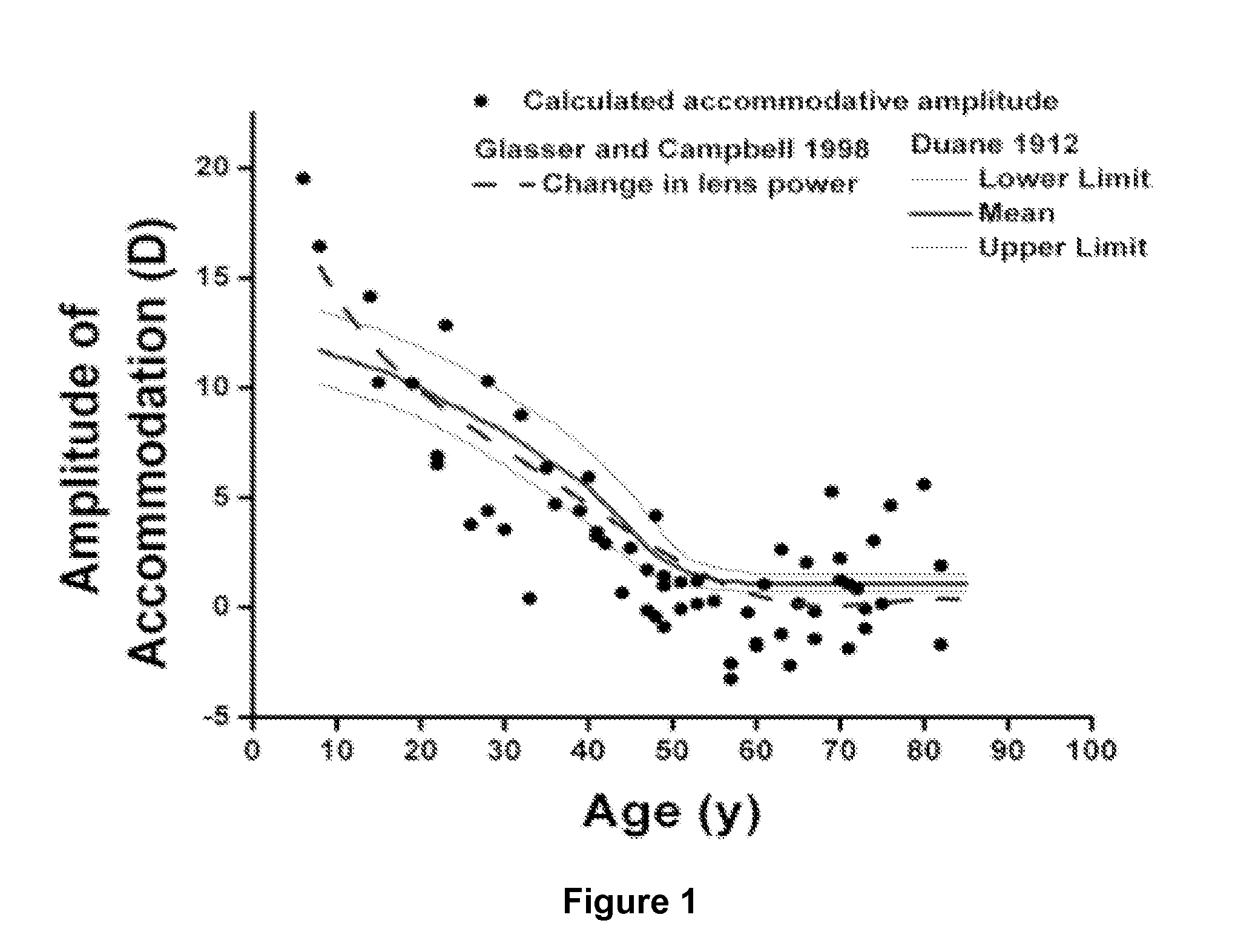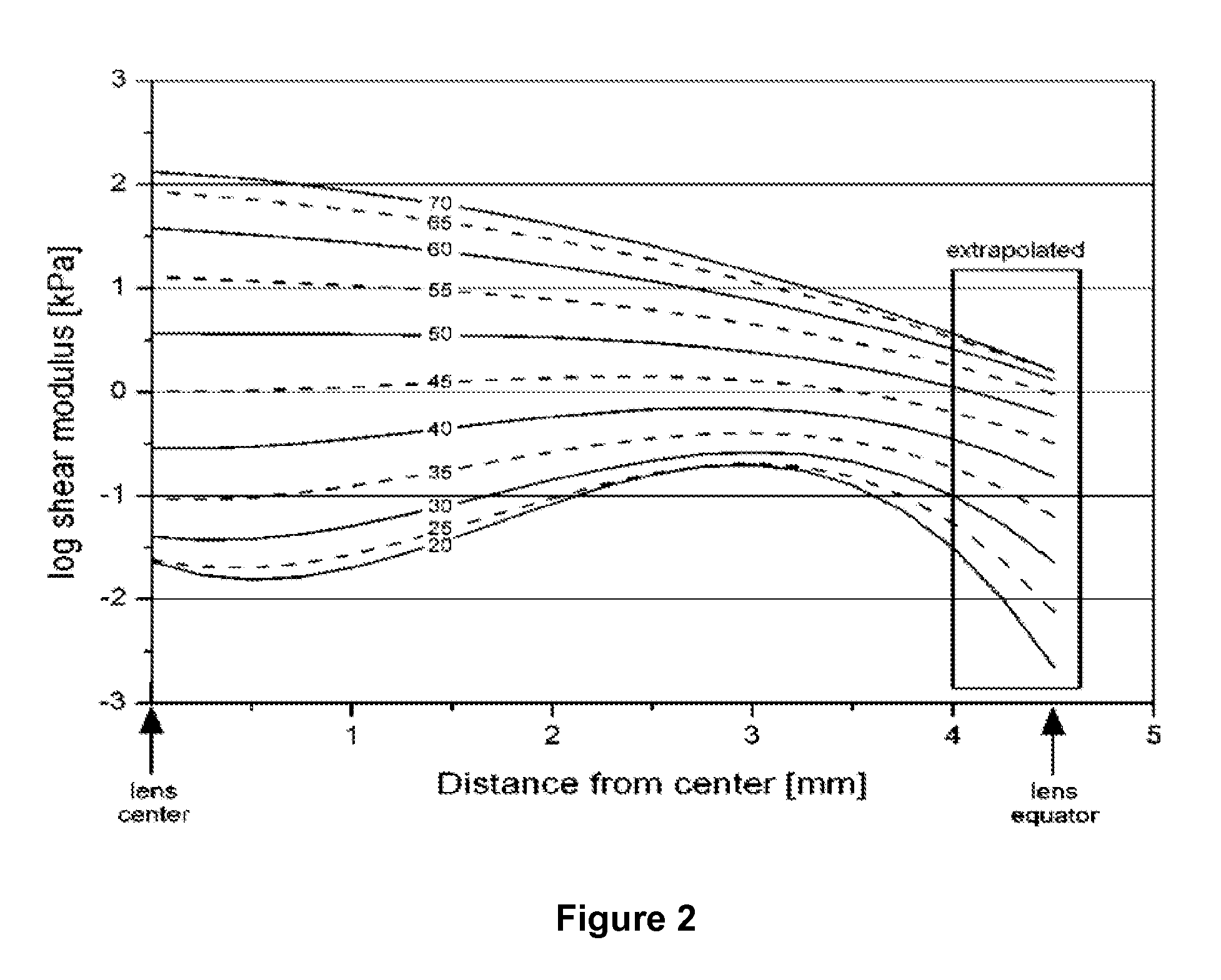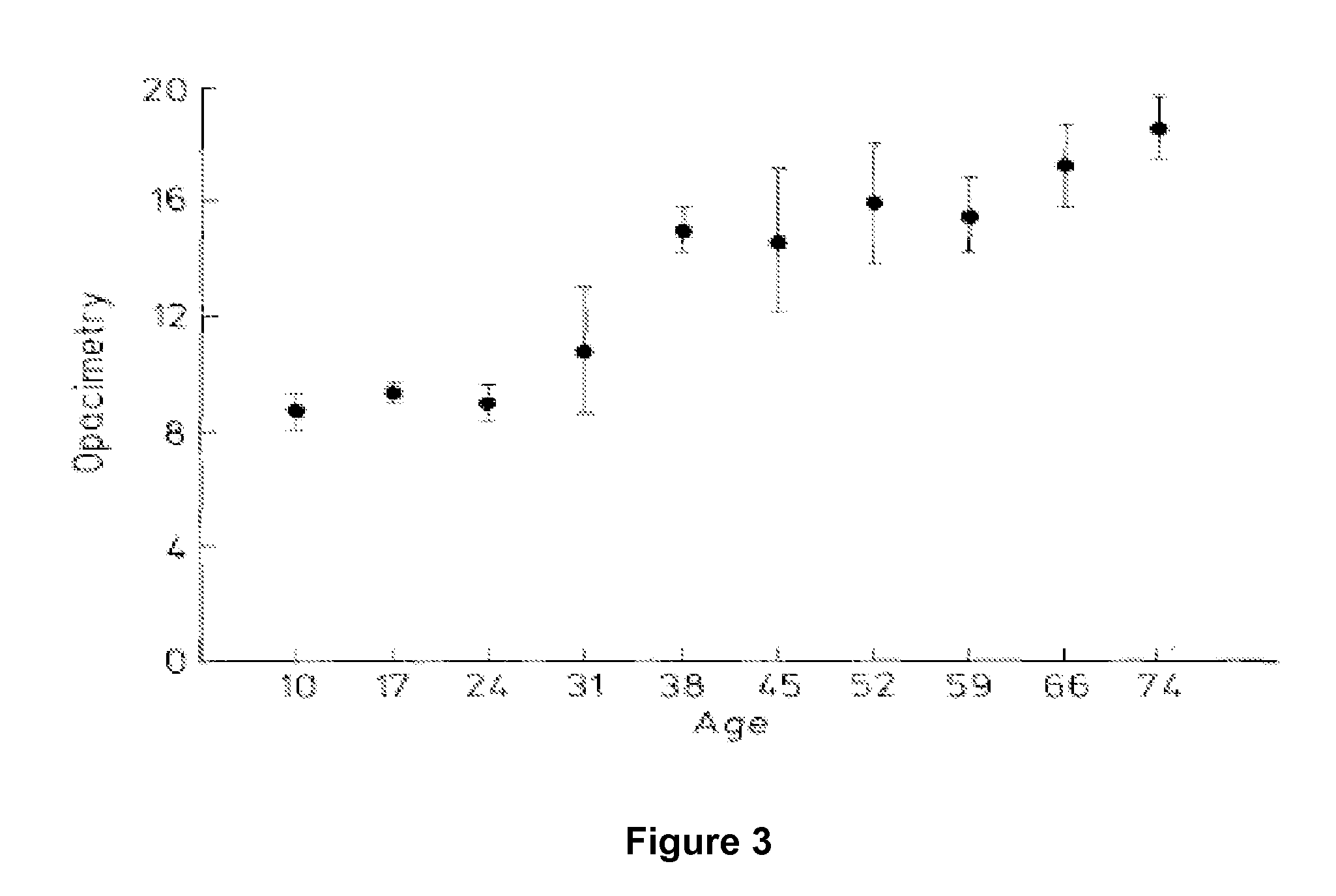Low dose lipoic and pharmaceutical compositions and methods
a composition and low-dose technology, applied in the direction of drug compositions, anti-noxious agents, biocide, etc., can solve the problem of more difficult to focus on near objects, increase the accommodative amplitude, increase or maintain the lens elasticity, and reduce or maintain the lens opacity
- Summary
- Abstract
- Description
- Claims
- Application Information
AI Technical Summary
Benefits of technology
Problems solved by technology
Method used
Image
Examples
example 1
In Vitro Toxicology Studies
[0043]Cell viability was determined using human umbilical vein endothelial cells (HUVEC, first passage). Cells were treated with the active agent in doses ranging from 0.1 μM to 100 μM. The number of live and dead cells was determined using the MultiTox-Fluor assay (Promega) or Live / Dead® assay (Invitrogen). Logistic plots were used to determine the compound's LD50 value. Lipoic acid was not cytotoxic in the concentration range.
example 2
[0044]Increase in Elasticity:
[0045]Pairs of mouse lenses were incubated in medium 200 supplemented with an antibiotic, an antimycotic, in the presence or absence of lipoic acid (concentrations ranging from 0.5 μM to 500 μM) for 8-15 hours. Each lens was removed from medium, weighed, and photographed on a micrometer scale. A coverslip of known weight (0.17899±0.00200 g) was placed on the lens, and the lens was photographed again on the micrometer scale. The diameter of each lens with and without the coverslip was determined from the photographs. The change in lens diameter produced by the force (coverslip) was computed ΔD=(Dwithcoverslip−Dwithoutcoverslip). The results (FIG. 4, ‡) indicate that lipoic acid at concentrations≧9.6 μM caused a statistically significant increase in ΔD, p<0.0001.
[0046]Decrease in Disulfide Bonds:
[0047]Lipoic acid at concentrations≧9.6 μM caused a statistically significant decrease in protein disulfides in the mouse lenses where the...
example 3
Preclinical and Clinical Studies
[0048]An exemplary clinical protocol may include patient selection criteria of age 45-55 years with some loss of clinical accommodative amplitude.
[0049]A test compound and / or placebo control may be administered in a controlled dark sterile environment with 1-photon visible light LED (computer controlled tilt mirror) system.
[0050]For acute treatment, the clinician could 1) apply a topical mydriatic agent, 2) wait for pupillary dilation (about 5 minutes), 3) introduce a test compound and / or placebo control with an appropriate delivery device, 4) wait 30 minutes, and 5) apply topical agent (e.g., cholecystokinin and vasopressin) to retract iris sphincter muscle to aid release of zonular tension during lens cytosol protein remolding.
[0051]Immediately following the procedure, the clinician may allow a time period for ocular drug clearance (e.g., about 30-60 minutes) and then allow patient to go home with laser glasses having a cutoff filter of about >550 n...
PUM
| Property | Measurement | Unit |
|---|---|---|
| diameter | aaaaa | aaaaa |
| pharmaceutical composition | aaaaa | aaaaa |
| oxidative stress | aaaaa | aaaaa |
Abstract
Description
Claims
Application Information
 Login to View More
Login to View More - R&D
- Intellectual Property
- Life Sciences
- Materials
- Tech Scout
- Unparalleled Data Quality
- Higher Quality Content
- 60% Fewer Hallucinations
Browse by: Latest US Patents, China's latest patents, Technical Efficacy Thesaurus, Application Domain, Technology Topic, Popular Technical Reports.
© 2025 PatSnap. All rights reserved.Legal|Privacy policy|Modern Slavery Act Transparency Statement|Sitemap|About US| Contact US: help@patsnap.com



